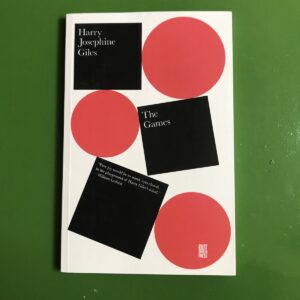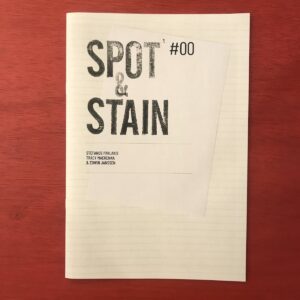Sad Sack is the second, expanded edition of a book of collected writing by Sophia Al-Maria. ‘When Book Works contacted you about printing a second edition you were both honoured and filled with trepidation… it felt like facing a refrigerator you left full of food while you were away… Unlike the metaphorical fridge, you can’t just wipe a page clean. In theory, sure. Erase. Redact. But that feels like a cover up, and this new edition can’t be the palimpsest that you would wish for in an ideal world. So you’ve turned the pages lilac, and expanded the sack. The additions to the (surely also soon-to-be-dated and wilting) contents are: Tarax’sup Meditation, Taraxos Praxis, Dear Farah, The Law of the Father, Black Friday, Dear Angel, @Sxfyxbot, The Untold (Tale of Mx Muffin), and Dearests.’
Sad Sack is a book of collected writing by Sophia Al-Maria, taking feminist inspiration from Ursula K. Le Guin’s 1986 essay ‘The Carrier Bag Theory of Fiction’; opposing ‘the linear, progressive, Time’s-(killing)-arrow mode of the Techno-Heroic.’ Encompassing more than a decade of work, Sad Sack tracks Al-Maria’s speculative journey as a writer, from the first seed of her ‘premature’ memoir, through the coining and subsequent critique of ‘Gulf Futurism’, towards experiments in gathering, containing, welling up and sucking dry.
Sophia Al-Maria is a Qatari-American artist, writer, and filmmaker. Though her work spans many disciplines including drawing, collage, sculpture and film it is united by a preoccupation with the power of storytelling and myth, interrogates the enduring orientalist gaze and residual histories of resource extraction and colonial authority in the context of contemporary culture and society.
Al-Maria has had solo exhibitions at Henry Art Gallery, Seattle; Mathaf: Arab Museum of Modern Art, Qatar; Tate Britain, London; and the Whitney Museum of American Art, New York; among other institutions. Her work has been included in group exhibitions at the ICA, London; LUMA Arles, France; the Museum of Contemporary Art, Toronto; the Museum of Contemporary Art, Chicago; the New Museum, New York; the Palais de Tokyo, Paris; and the Ullens Center for Contemporary Art, Beijing; La Biennale di Venezia, Venice, Italy; and numerous other venues.





